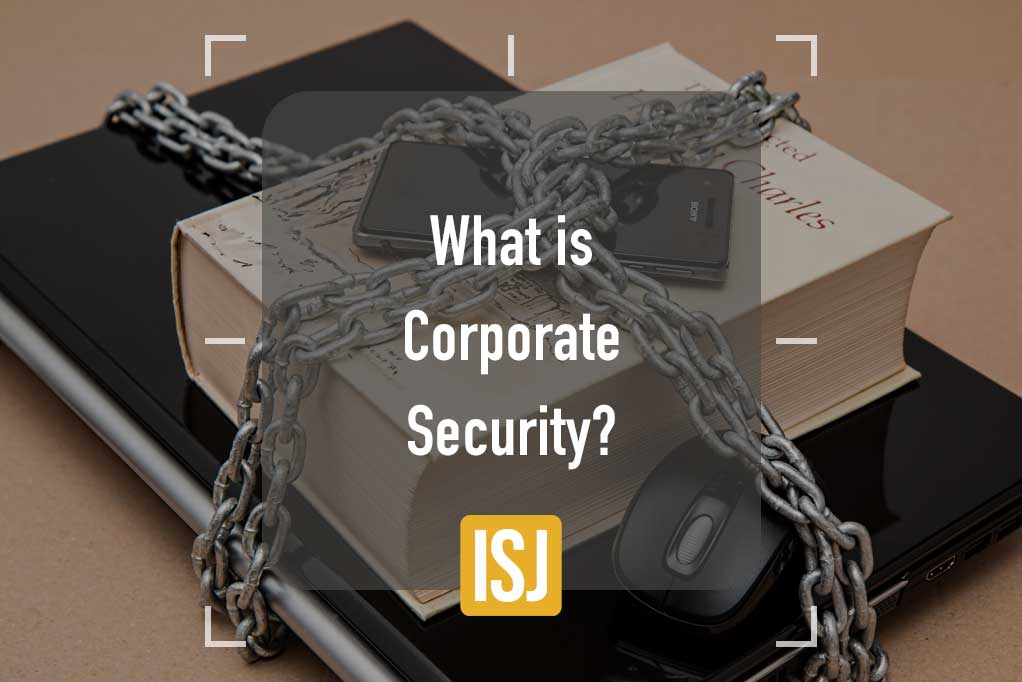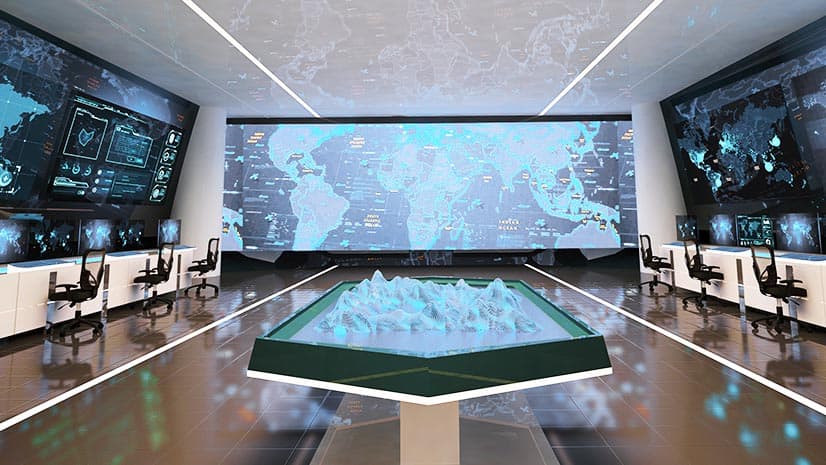Browsing the World of Corporate Security: Key Insights and Best Practices
Browsing the World of Corporate Security: Key Insights and Best Practices
Blog Article
From Cybersecurity to Physical Actions: Strengthening Business Protection in an Altering World
By integrating the staminas of both cybersecurity and physical safety, companies can create an extensive protection method that resolves the diverse variety of dangers they face. In this discussion, we will certainly explore the transforming hazard landscape, the demand to incorporate cybersecurity and physical safety, the implementation of multi-factor verification actions, the relevance of employee understanding and training, and the adjustment of safety procedures for remote labor forces. By examining these crucial areas, we will certainly obtain beneficial insights into just how companies can strengthen their company safety and security in an ever-changing globe.
Comprehending the Altering Risk Landscape
The developing nature of the modern world necessitates a thorough understanding of the altering danger landscape for effective corporate safety and security. In today's electronic and interconnected age, dangers to business safety and security have ended up being much more complicated and innovative. As technology advances and businesses become increasingly dependent on electronic framework, the capacity for cyberattacks, data breaches, and various other security breaches has actually considerably raised. It is crucial for companies to stay informed and adapt their safety gauges to deal with these progressing risks.
One secret element of recognizing the transforming hazard landscape is identifying the various kinds of hazards that organizations encounter. Cybercriminals are regularly developing new methods to manipulate susceptabilities in computer systems and networks. These hazards can range from malware and ransomware assaults to phishing frauds and social engineering methods. In addition, physical hazards such as burglary, criminal damage, and business reconnaissance stay prevalent issues for companies.
Monitoring and evaluating the risk landscape is important in order to determine potential risks and vulnerabilities. This involves remaining upgraded on the most current cybersecurity patterns, examining hazard knowledge reports, and conducting regular threat evaluations. By understanding the transforming danger landscape, organizations can proactively carry out appropriate security actions to mitigate dangers and protect their assets, credibility, and stakeholders.
Integrating Cybersecurity and Physical Protection
Integrating cybersecurity and physical safety and security is critical for comprehensive corporate security in today's electronic and interconnected landscape. As organizations increasingly depend on technology and interconnected systems, the borders in between physical and cyber dangers are becoming obscured. To properly guard versus these dangers, an alternative approach that integrates both cybersecurity and physical safety measures is essential.
Cybersecurity concentrates on shielding electronic properties, such as data, networks, and systems, from unapproved accessibility, disruption, and burglary. Physical safety, on the other hand, encompasses procedures to safeguard physical possessions, individuals, and facilities from vulnerabilities and dangers. By incorporating these two domain names, companies can attend to vulnerabilities and hazards from both digital and physical angles, thereby enhancing their general security position.
The combination of these 2 self-controls enables a much more thorough understanding of protection threats and makes it possible for a unified action to incidents. For instance, physical access controls can be improved by integrating them with cybersecurity protocols, such as two-factor verification or biometric recognition. Similarly, cybersecurity steps can be complemented by physical safety measures, such as surveillance electronic cameras, alarms, and secure access factors.

Executing Multi-Factor Authentication Actions
As organizations increasingly focus on detailed protection procedures, one efficient method is the implementation of multi-factor verification actions. Multi-factor verification (MFA) is a security approach that calls for customers to provide numerous types of identification to access a system or application. This technique includes an additional layer of defense by combining something the customer understands, such as a password, with something they have, like a fingerprint or a safety and security token.
By carrying out MFA, companies can substantially enhance their protection posture - corporate security. Traditional password-based verification has its constraints, as passwords can be conveniently compromised or forgotten. MFA alleviates these threats by including an added authentication variable, making it a lot more hard for unauthorized individuals to access to sensitive information
There are several sorts of multi-factor authentication techniques offered, including biometric verification, SMS-based confirmation codes, and equipment symbols. Organizations require to examine their certain demands and select one of the most ideal MFA remedy for their demands.
Nevertheless, the application of MFA must be very carefully prepared and executed. It is Source crucial to strike an equilibrium in between protection and functionality to stop individual frustration and resistance. Organizations needs to likewise take into consideration potential compatibility problems and give sufficient training and assistance to make sure a smooth shift.
Enhancing Worker Awareness and Training
To enhance company security, organizations should focus on boosting employee recognition and training. In today's rapidly developing hazard landscape, employees play a crucial duty in securing an organization's delicate details and possessions. Unfortunately, numerous protection breaches occur due to human mistake or absence of awareness. Consequently, organizations need to invest in detailed training programs to educate their workers about prospective threats and the most effective methods for mitigating them.
Effective worker recognition and training programs ought to cover a large range of subjects, including data defense, phishing strikes, social design, password hygiene, and physical safety and security actions. These programs need to be customized to the certain needs and responsibilities of different worker functions within the company. Routine training workshops, simulations, and sessions can aid workers establish the necessary skills and expertise to react and determine to safety and security dangers successfully.
In addition, organizations ought to motivate a society of safety and security awareness and supply recurring updates and reminders to maintain employees notified concerning the most current risks and reduction strategies. This can be done with inner interaction networks, such as e-newsletters, intranet sites, and email projects. By cultivating a security-conscious labor force, organizations can dramatically reduce the probability of safety and security events and protect their useful assets from unauthorized gain access to or compromise.

Adapting Safety And Security Steps for Remote Workforce
Adapting company safety steps to accommodate a remote workforce is important in making certain the protection of delicate information and assets (corporate security). With the enhancing trend of remote job, companies must apply proper safety and security actions to minimize the dangers associated with this brand-new way of working
One critical facet of adapting safety and security steps for remote job is establishing safe and secure interaction networks. Encrypted messaging systems and online personal networks (VPNs) can help protect delicate info and stop unapproved gain access to. Additionally, companies ought to implement using strong passwords and multi-factor verification to boost the safety and security of remote access.
One more essential factor to consider is the execution of safe and secure remote accessibility remedies. This includes giving workers with safe and secure accessibility to business sources and information through digital desktop computer framework (VDI), remote desktop see post procedures (RDP), or cloud-based options. These innovations guarantee that sensitive info remains secured while making it possible for employees to do their functions efficiently.

Last but not least, comprehensive protection understanding training is critical for remote workers. Educating sessions need to cover best techniques for firmly accessing and handling delicate info, recognizing and reporting phishing efforts, and maintaining the total cybersecurity health.
Conclusion
In conclusion, as the threat landscape proceeds to evolve, it is critical for companies to reinforce their security determines both in the cyber and physical domains. Incorporating cybersecurity and physical protection, implementing multi-factor verification steps, and enhancing staff member understanding and training are necessary actions in the direction of attaining robust company protection. Additionally, adjusting protection steps to fit remote labor forces is vital in today's altering globe. By executing these steps, companies can mitigate threats and safeguard their useful properties from possible threats.
In this conversation, we will explore the changing danger landscape, the need to integrate cybersecurity and physical security, the execution of multi-factor authentication measures, the value of worker understanding and training, and the adaptation of security steps for remote labor forces. Cybersecurity procedures can be complemented by physical safety and security measures, such as security cameras, alarms, and safe and secure gain access to points.
As companies progressively prioritize detailed safety and security actions, one efficient method is the application of multi-factor verification web link measures.In verdict, as the hazard landscape continues to evolve, it is vital for companies to enhance their protection measures both in the cyber and physical domains. Incorporating cybersecurity and physical safety, executing multi-factor verification actions, and boosting staff member understanding and training are necessary steps in the direction of accomplishing durable company safety.
Report this page